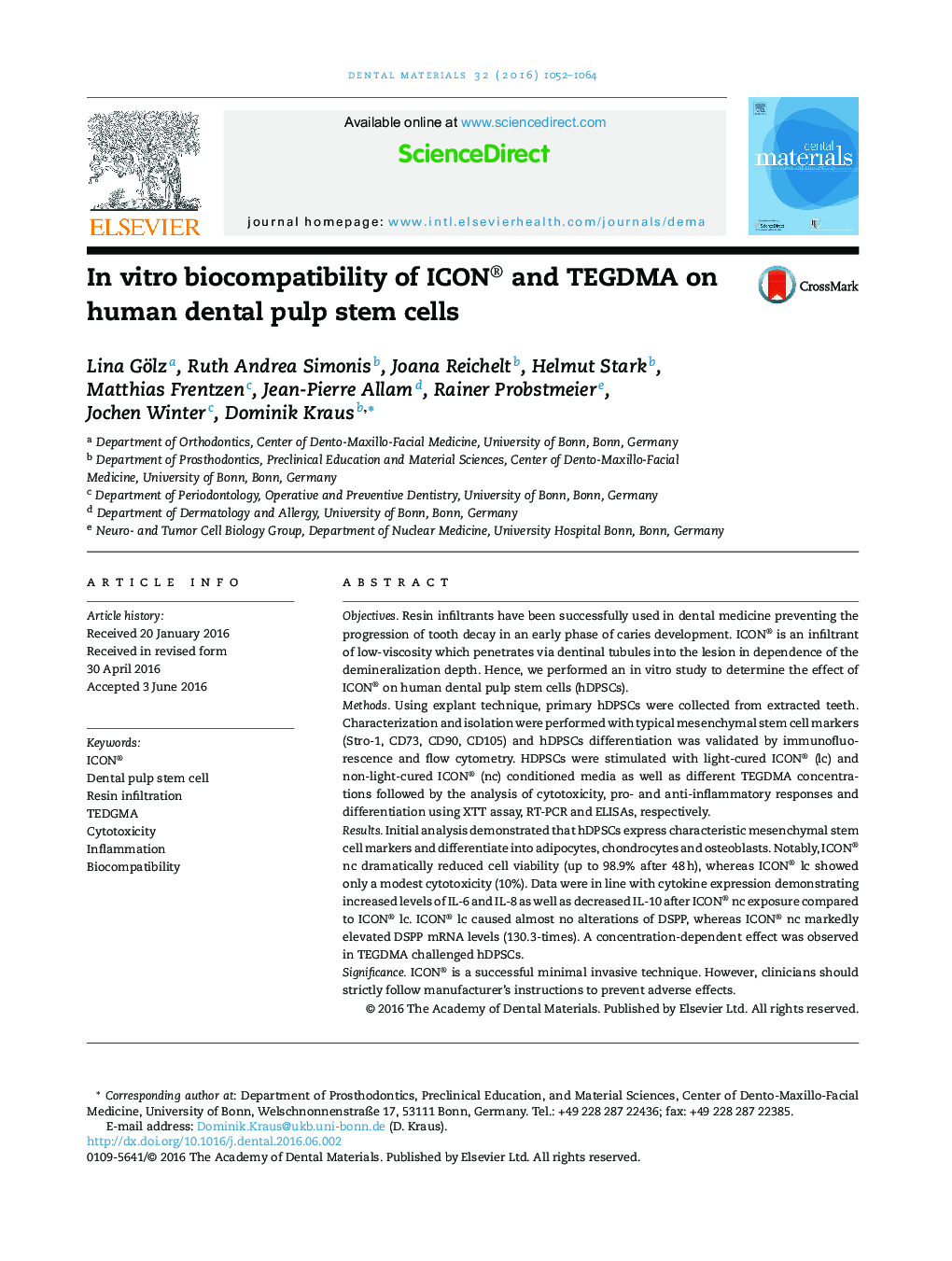| Article ID | Journal | Published Year | Pages | File Type |
|---|---|---|---|---|
| 1420427 | Dental Materials | 2016 | 13 Pages |
ObjectivesResin infiltrants have been successfully used in dental medicine preventing the progression of tooth decay in an early phase of caries development. ICON® is an infiltrant of low-viscosity which penetrates via dentinal tubules into the lesion in dependence of the demineralization depth. Hence, we performed an in vitro study to determine the effect of ICON® on human dental pulp stem cells (hDPSCs).MethodsUsing explant technique, primary hDPSCs were collected from extracted teeth. Characterization and isolation were performed with typical mesenchymal stem cell markers (Stro-1, CD73, CD90, CD105) and hDPSCs differentiation was validated by immunofluorescence and flow cytometry. HDPSCs were stimulated with light-cured ICON® (lc) and non-light-cured ICON® (nc) conditioned media as well as different TEGDMA concentrations followed by the analysis of cytotoxicity, pro- and anti-inflammatory responses and differentiation using XTT assay, RT-PCR and ELISAs, respectively.ResultsInitial analysis demonstrated that hDPSCs express characteristic mesenchymal stem cell markers and differentiate into adipocytes, chondrocytes and osteoblasts. Notably, ICON® nc dramatically reduced cell viability (up to 98.9% after 48 h), whereas ICON® lc showed only a modest cytotoxicity (10%). Data were in line with cytokine expression demonstrating increased levels of IL-6 and IL-8 as well as decreased IL-10 after ICON® nc exposure compared to ICON® lc. ICON® lc caused almost no alterations of DSPP, whereas ICON® nc markedly elevated DSPP mRNA levels (130.3-times). A concentration-dependent effect was observed in TEGDMA challenged hDPSCs.SignificanceICON® is a successful minimal invasive technique. However, clinicians should strictly follow manufacturer's instructions to prevent adverse effects.
